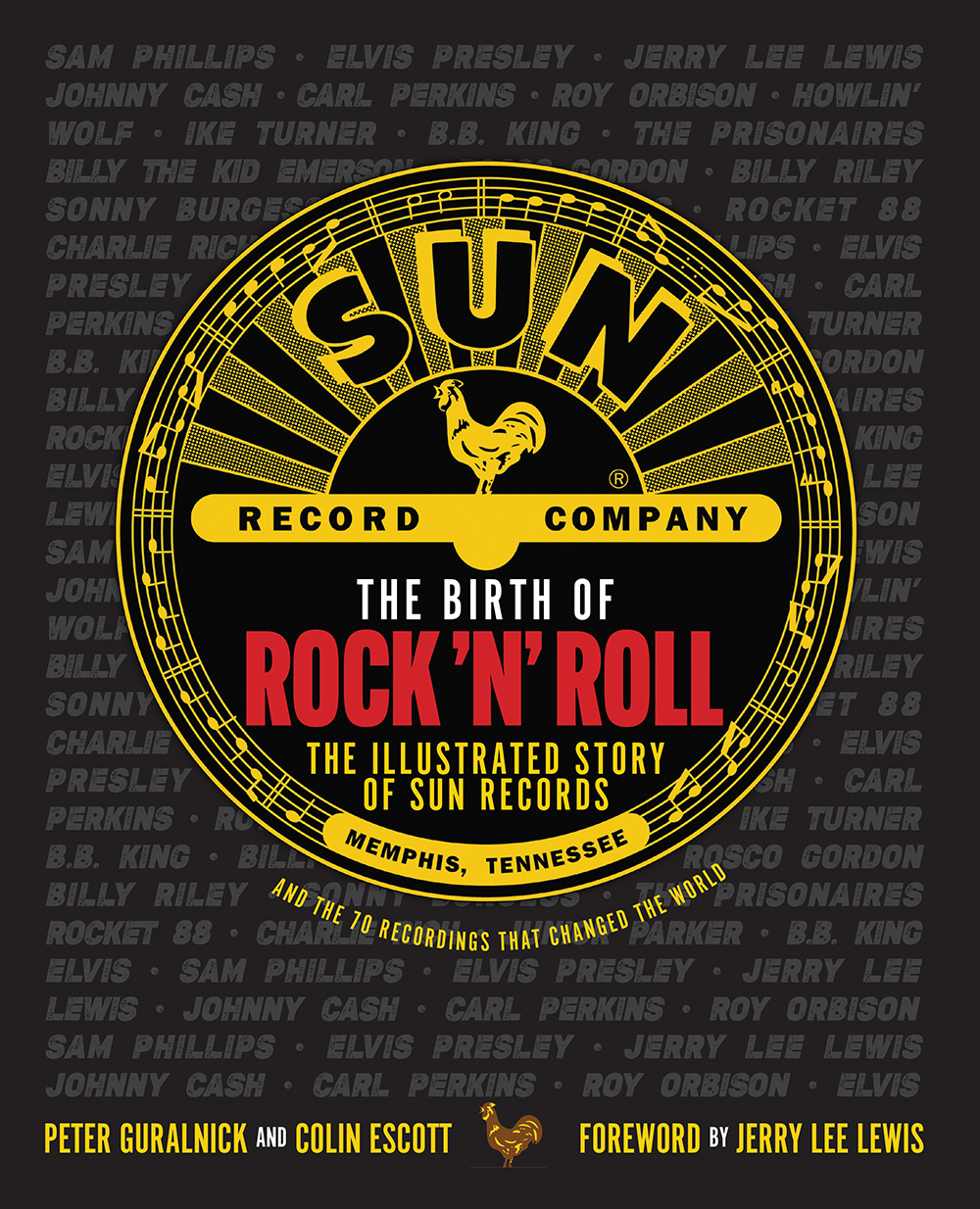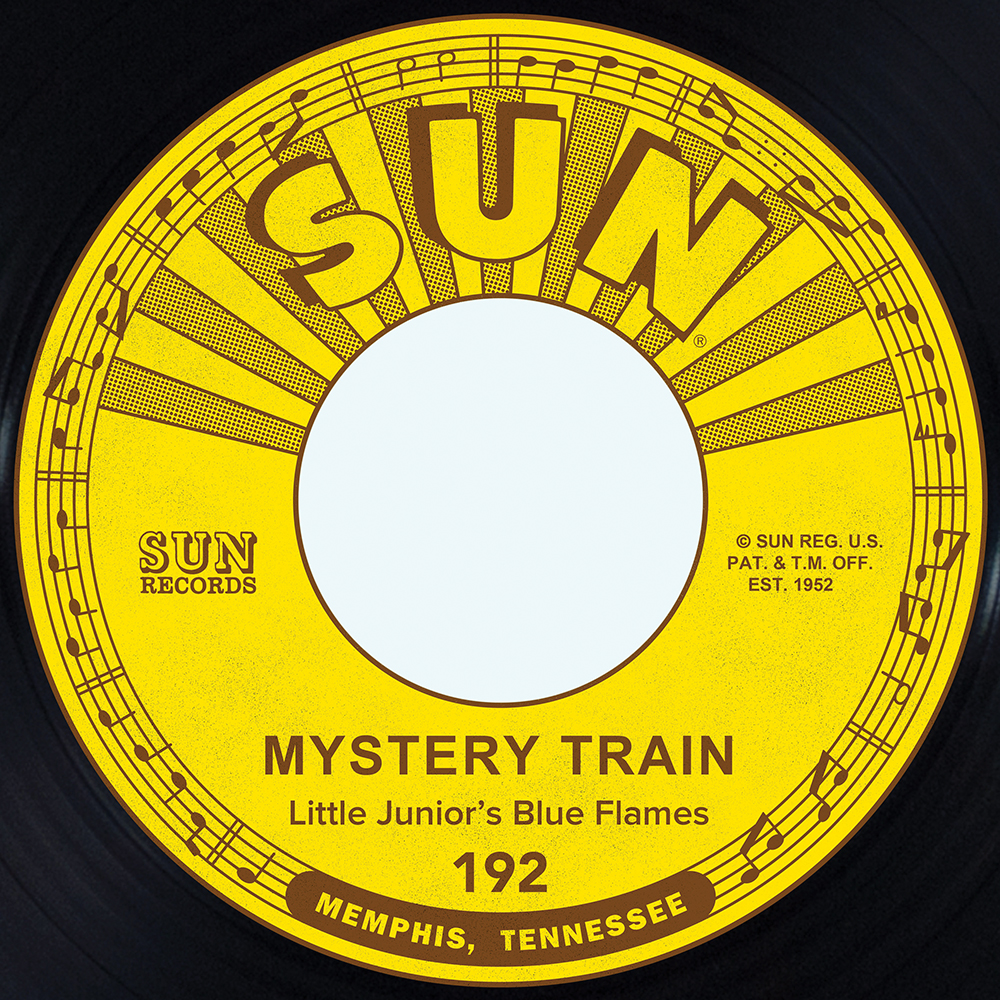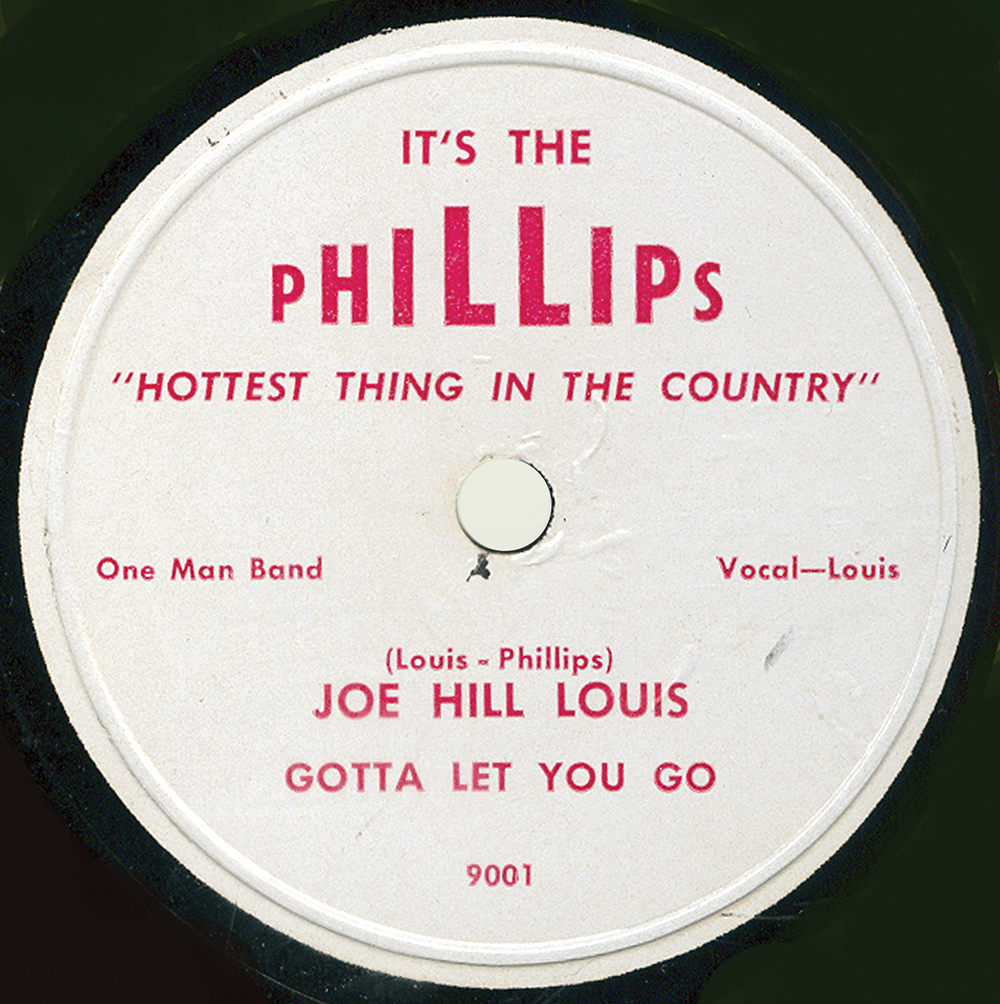It was sometime in early 1952 when Don Paull and the Canyon Caravan released their debut 78 rpm single “Too Little Lovin’,” a record destined to fall into obscurity not long after. It’s mainly notable for being the first release on a fledgling label that the world might still be celebrating now, 70 years later, if the music had borne any mark of distinction. But you can’t win them all, especially with what was presumably the standard-issue Western swing sound of the day. All that was memorable about that release was the label: Sun. And even that was a flop.
But wait, let’s rewind. A flop? As it turns out, there’s an alternative history here, in a tale filled with what celebrated author Peter Guralnick calls “the other directions that might have been taken.” While the tiny Sun label of Albuquerque, New Mexico, simply evaporated within a year’s time, another company of the same name released its first single, “Drivin’ Slow,” by 15-year-old “alto wizard” Johnny London. There were twin Suns, you might say, born in 1952, only one of which survived. Only one of which went on to change the world.

It’s no accident that that resonates with the mythology of Elvis Presley, of course, for the Memphis-based Sun Records kickstarted his global success; for many, that’s where the Sun Records story begins and ends. Yet there are whole worlds and many diverse roads, both taken and not taken, contained in the Sun story. That’s made abundantly clear in a new deluxe volume published by Weldon Owen International, The Birth of Rock ‘N’ Roll: The Illustrated Story of Sun Records and the 70 Recordings that Changed the World. Now, 70 years later, those diverse roads are what make the label’s story so compelling.
That those stories are foregrounded is a testament to the volume’s seriousness of purpose. While it strikes the eye as a lovely coffee table book, the glossy pages and beautifully rendered archival photographs are complemented by the first-class writing of both Guralnick, who penned the definitive biography of Sun founder Sam Phillips, and Colin Escott, best known for his 1991 history of Sun, Good Rockin’ Tonight. All photos and layouts aside, it is their words which elevate The Birth of Rock ‘N’ Roll above the typical coffee table fare.
As Guralnick notes, “I think the book is a tribute to Sam’s statement: ‘If you’re not having fun, it isn’t worth doing.’ For me, this was just a lot of fun. It was such a pleasure working with both Colin and Karyn Gerhard, who was the editor on it. It was really a challenge at times, just making the book live up to what it was about, through its content. I’ve written a lot about Sun and Sam over the years, and when Karyn called up about this initially, ‘No’ was on the tip of my tongue. But I listened to Karyn’s vision of the book and what it could be, and ‘No’ never came out. I just said, ‘Yes.’”


Beyond the Hits
It’s fortuitous that such a book might appear now, as Sun turns 70, fast on the heels of Baz Luhrmann’s film Elvis, not to mention the 2017 Sun Records miniseries, for it radically reframes what really mattered about the indie label. “It’s focused, the book. It’s not just all over the place,” says Guralnick. “Colin and I clearly have written so much about so many of the subjects in the book, but just reading Colin’s accounts, to me, they’re fresh. He’s not just recapping what he’s said before. For both of us, the opportunity to write in a somewhat different context about something we’d both written about before afforded us with an opportunity to tell the story in a somewhat different way.”
For his part, Guralnick’s contribution tells the Sun Records story through 70 little slabs of wax: an historical-minded sampling of the singles that made Sun great. And, as the author emphasizes, each selection is notable for how it fleshes out our understanding of Sun, above and beyond any commercial or musical success it may or may not represent. “I tried to use these selections of the different records to tell the story of Sun in a different way,” he says. “They’re not always my favorite. There’s nothing there I would disown, but the point is that in choosing some of the records — whether it was a single by Charlie Feathers, which showed a different direction he might have gone in, or by the Brewsteraires or the Jones Brothers, which suggest yet another direction Sam might have gone in — I’m trying to show that no paths were prescribed and no paths were proscribed. His curiosity was wide-ranging.”
Indeed, specific stories aside, it is Sam Phillips’ curiosity and venturesome taste that are most striking when perusing the 70 singles, underscored by the many blues tracks on Sun, now regarded as legendary. The first four on the list were never Sun releases at all, yet are crucial to the story, starting with the game-changing “Rocket 88” by Jackie Brenston and His Delta Cats, whose guitar amp was damaged during the drive up from Clarksdale, Mississippi. As Guralnick writes, “When the incongruously dapper white man [Phillips] plugged it in and turned on the power, there was a loud buzzing noise … but Sam Phillips seemed strangely undaunted. He liked the sound, he said, it was original, it was different — which for him evidently was the hallmark of creativity.”


It’s the Phillips
Phillips’ embrace of strangeness helped establish his Memphis Recording Service, opened in 1950, as a go-to source of unique tracks for other labels like Chess and Modern to release. Sun Records did not yet exist, but its reigning aesthetic was already in place, expressed in Phillips’ oft-quoted maxim, “If you are not doing something different, you are not doing anything at all.” It turned out that the Delta Cats’ guitar distortion, which has led many to name “Rocket 88” the “first rock-and-roll record,” was nothing new to Phillips by then. A year earlier, he had already put his faith in Joe Hill Louis, the one-man-band.
After recording Louis playing and singing “Gotta Let You Go” and “Boogie in the Park” in the summer of 1950, Phillips was moved to start his own label in partnership with the gonzo Memphis DJ, Dewey Phillips (no relation). Appropriately dubbed “It’s The Phillips,” the label went nowhere, but it did set the stage for Sun. Louis’ guitar sound added a greasy crunch to the instrument’s sound that was nigh-unprecedented, with the exception of John Lee Hooker’s 1948 release on Modern Records, “Boogie Chillen’.” Hooker’s single had become a guiding star of sorts for Phillips. It embodied the very strangeness that Phillips would end up chasing the rest of his life.
Regarding “Boogie Chillen’,” Guralnick notes today that “that record was so influential, on Sam and the whole history of Sun. I forget how many remakes of it there were [on Sun], maybe just two or three, but you also have Jerry Lee Lewis’ ‘Whole Lotta Twistin’,’ which is also a remake of John Lee Hooker’s tune.” Indeed, it was boogie and blues that defined the output of the Memphis Recording Service from the start, be it Howlin’ Wolf or B.B. King. It was only natural that Sam Phillips began to chafe at the limited possibilities of simply selling his masters to labels in other cities; serving as both their recording engineer and A&R man, it was his aesthetic that guided the whole process. He deserved a bigger slice, and a greater say in what was or was not released.
Thus was Sun Records born, as Escott limns in his pithy yet brief overview of the label’s history. And if the first release was an uncharacteristically jazzy blues by a teenage “alto wizard,” it was followed, (after a brief hiatus) in January of 1953 with a string of unpolished blues by the likes of Willie Nix, Walter Horton, Rufus Thomas Jr., D.A. Hunt, Memphis Ma Rainey, Jimmy DeBerry, and The Prisonaires. It was a mix of the soon-to-be famous with those consigned to obscurity, all benefiting from Sam Phillips’ ear for unique sounds.
An Open Door Policy
As Guralnick puts it, “Sam set the entire direction of everything that was going on there, until Jack Clement came in. He did everything himself, along with Marion Keisker’s assistance in every other aspect except the recording. She was invaluable, and someone he could lean on. But the point is, it was a one-man operation.” A crucial component of the operation was that man’s uniquely progressive vision.
Jerry Phillips, Sam’s youngest son, who oversees the living legacy of Sam Phillips Recording on Madison, reflects on his father’s character today. “Sam had an open door policy, particularly when he started out in 1950 with Black artists. You could walk in there and if he liked what he heard, he’d put a record out on you or lease your record to Chess or Modern or someone like that. He was looking for the talent, man. And he was looking for something different. He was a passionate guy who had to work really, really hard to record all those artists. While I was at home in bed or studying for school, he was up there in the studio, working his ass off with all these Black artists.”
Sam Phillips’ openness to Black music grew from a passionate love of the music itself, more than any sense that he could cash in on a particular sound. As Escott writes, “In 1952, R&B sales reportedly totaled less than kiddie discs. Phillips was chasing a tiny piece of a small market.” Yet, Guralnick writes a few pages later, “There was nothing, Sam felt, that could ‘tell the truth like the blues, something so absolutely true, so close to life’ that it just cut to the core of human experience.” The sincerity of those words was embodied in Phillips’ willingness to take a chance on a relative unknown named Chester Burnett, aka Howlin’ Wolf. Upon first hearing Wolf, Phillips thought, “My God, this is where the soul of man never dies.”
That contrasts starkly with a growing counter-narrative of today, which often paints Elvis, Phillips, or both as the villains in a reductionist cartoon of cultural theft from the African Americans whose music was deeply imprinted in the minds of both. In fact, though he surely hoped to profit from his work, Phillips’ deep appreciation of Black artists in their own right helped launch the music careers of many. According to Guralnick’s write-up of record number three, Wolf’s “Moanin’ At Midnight,” Phillips always believed that Wolf could have been, as Phillips put it, “the counterpart of Elvis — this guy would have been huge with white youngsters, along with Black.”
To Jerry Phillips, this makes sense if one considers how his father grew up, working on a farm in Alabama. “On the tenant farm they had both Black and white cotton pickers on there. He heard them all singing in the fields, and their hearts and souls coming up through that.” Furthermore, Sam was open to people of all classes as well as races. “Most all of the people who came through his studio, except maybe Elvis, but like Carl Perkins or Jerry Lee Lewis, were country people all the way. All those people were. There was nothing sophisticated about them at all, until you got to Charlie Rich, who was pretty much a jazz piano player, actually. That’s what he liked. Yet Sam would tell you that Howlin’ Wolf’s about as sophisticated as you can get.
“His daddy died when he was in 10th grade, and he had to quit school,” Jerry continues. “He never got a high school diploma. He had to go to work. I think he got a lot of his work ethic from having to do that. He wanted to be a criminal defense attorney, and he would have been a good one. He was always for the underdog. He was always for those people who didn’t stand a chance. That’s where his interest in recording Black artists came in. In my family, there wasn’t any racism. There just wasn’t.”
Furthermore, Sam Phillips cultivated a culture within the Sun Records organization that reflected his values. The favorite Sun song of longtime employee Marion Keisker, who put her heart and soul into the organization, was a blues track, “Time Has Made a Change.” Guralnick recalls, “She loved that Jimmy DeBerry song. While she was almost exclusively focused on Sam, who drew her in, it’s a tribute to her that she could be open. She was wide-open to issues of racial justice and to gender equity.”
Carrying the Torch
The rest of the Sun story is burned into our collective consciousness, of course, through countless mythologizing iterations of the Elvis Presley story, not to mention the birth of rock-and-roll and its country cousin, rockabilly. After the first 40 pages of the 70 singles, we finally come to Sun’s first release of a white artist, in early 1954, and of course the discovery of Presley that year. Even there, The Birth of Rock ‘N’ Roll has some surprises, as we learn that the biggest selling artist on Sun was not Elvis, but Carl Perkins’ “Blue Suede Shoes” in January of 1956. That, too, carried Phillips’ democratic ethos: It was the first song in history to top the country, R&B, and pop charts.
The label carried on for over a decade after those initial epochal hits by Perkins, Lewis, Johnny Cash, Roy Orbison, and others, finally being sold to Shelby Singleton in 1969. But, according to Jerry Phillips, the label’s continued legacy was still championed by the Phillips family. It was a labor of love. “I can’t leave my late brother Knox out of this,” he says. “When Sam sold Sun to Shelby Singleton, Knox picked the torch up and carried it on through, not letting people forget what Sun Records was. He was always on a crusade to keep people aware of Sun Records and its impact on the world. He was a real torch bearer for our family. And he’s the one who introduced Sam to Peter Guralnick. So we suggested that something Knox had written be used in the book [as the afterword]. Because we felt like Knox needed to be included. I was always the rebel of the family, and Knox was the one who was doing the heavy lifting.”
That heavy lifting has ensured Sun’s legacy, as the new book by Guralnick and Escott marks the Sun catalog once again finding a new home. “After 70 years, it just got bought again,” says Jerry in disbelief. “It sold once in 1969, and then got bought again last year by Primary Wave. Now they’re releasing a new compilation album once a month. That’s 70 years, and they’re treating it like it’s a brand-new product almost, you know? They’re looking at it like this stuff is just timeless. And it is. This new book, it’s educational. At one time, Sam Phillips was the hottest record producer in the world, when you think about it. And none of those artists sounded like each other.”
I love perfect imperfection, I really do. Perfect? That’s the devil. There’s too much powder and rouge around. People want the real thing. — Sam Phillips
